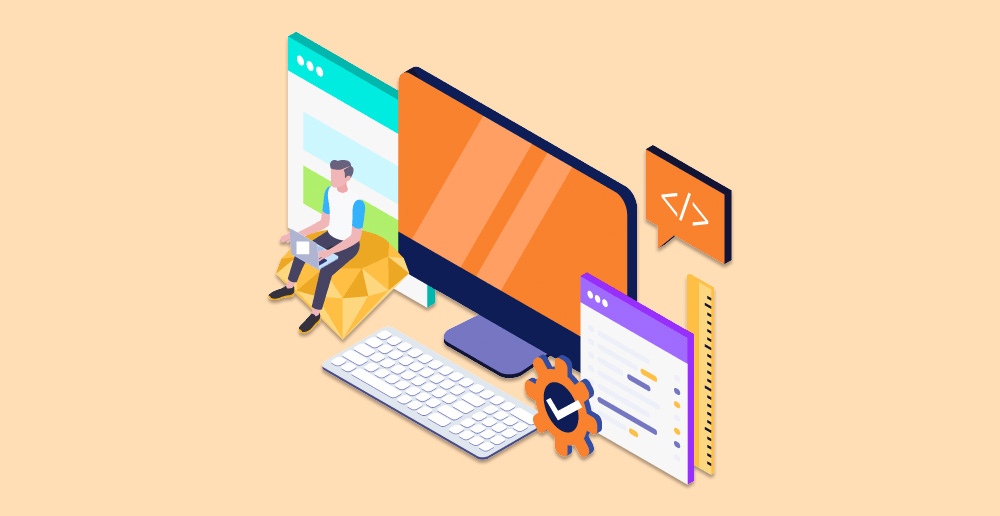When establishing your online business presence, the design and style of your website play a crucial role. After all, a well-crafted website tailored to your target audience is an essential component of your digital marketing strategy. But should you opt for website templates or invest in custom web development? Both options have their pros and cons.
Understanding Custom Web Design
A custom website is precisely what it sounds like – a unique site built specifically for your brand without using third-party templates. Working with professional web designers and developers can provide numerous benefits for businesses seeking a one-of-a-kind website. A fully customised solution allows you to align your website and branding with your marketing strategy while offering an exceptional user experience for your target audience.
However, there are some drawbacks to custom web design. This approach can be more complex and expensive compared to ready-made templates available on content management systems (CMS) like WordPress.
Steps to Build a Custom Designed Website
Creating a custom website typically involves five basic steps. While each custom web designer in Melbourne may have their own preferred method, the following process can be adapted to suit virtually any business, from a custom ecommerce website design site to a standalone content-only landing page.
1. Define Your Goals
Before diving into coding, assess your goals and determine what you want to achieve with your website. Take a step back and analyse your technical and commercial requirements. With a custom website, you have the flexibility to add or remove nearly any features you desire.
2. Create a Framework
Outline the structure of your website, including specific site functions, how they will operate, and the desired outcome. If you choose to work with a development and design agency, their team of experts can handle this aspect for you.
3. Design and Develop
At this stage, the actual coding begins. Your development team will integrate your website’s design and functional elements to create a cohesive, standout site.
4. Test the Website
Once your website is nearly complete, it should undergo several rounds of testing to identify and resolve any errors, bugs, or performance issues.
5. Launch Your Site
After addressing any issues discovered during testing, your site is ready to launch. Monitor its performance during the initial days to ensure it runs smoothly. Custom-built websites may require more support than template-based ones, so keep an eye on your site’s performance.
What are the disadvantages of custom web design?
While custom web design offers numerous benefits, it is essential to consider its limitations and disadvantages before engaging a design team to create a site from scratch.
Higher Design Costs
One of the most significant drawbacks of custom built sites is the cost. This complex process requires a diverse range of expertise and a considerable amount of time. As a rough estimate, a fully customised web design can cost anywhere from $5,000 and up, depending on the site’s complexity and requirements. In contrast, using a template design is often much more affordable.
However, it’s crucial to view custom websites as a long-term investment. The SEO benefits, faster page load speeds, and improved conversion rate performance may offset the additional costs compared to a template-based design.
Longer Development Time
Another drawback of custom web design is the time it takes to create the finished product. Depending on your website’s complexity, it may take several months for the design team to complete the project.
Despite the longer development time, custom website designs typically require fewer modifications post-launch. The careful planning and attention to detail during the design process mean that you won’t need to make ongoing tweaks as you might with a templated design.
The Pros and Cons of Custom Web Design
Before deciding on a custom approach, it’s essential to weigh the drawbacks against the benefits. While the costs and development time may be higher, the resulting website will likely provide a better user experience, improved SEO performance, and a more cohesive brand image.
Ultimately, the choice between custom web design and template-based design depends on your specific needs, budget, and desired level of customisation. By carefully considering these factors, you can make an informed decision that best suits your online business presence.
Making the Right Choice for Your Online Presence
The decision between custom web design and website templates ultimately depends on your business needs. While some businesses may find a template sufficient, others with more unique and complex requirements might benefit from a customised web design.
If you’re looking for a future-proof, mobile responsive website with a seamless design across all devices, consider reaching out to our professional team of custom web designers in Melbourne or any other location in Australia where your business operates.
However, if you prefer a more affordable and generic solution, a template design may be the better choice. Regardless of your decision, our team at Design Point Digital are here to help ensure your online presence and ecommerce website design accurately reflect your brand and customers for optimal results!


